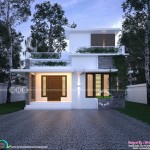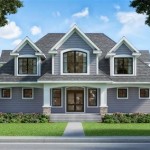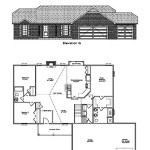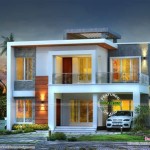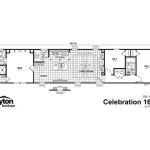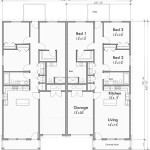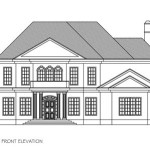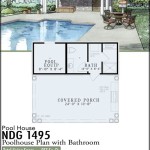Small House Plans With Indoor Swimming Pool
Integrating an indoor swimming pool into a small house plan presents unique design challenges and opportunities. Careful consideration of space utilization, building materials, and mechanical systems is crucial for successful execution. This article explores the key aspects of incorporating a pool within a compact footprint, focusing on maximizing functionality and maintaining a comfortable living environment.
One of the primary considerations for small house plans with indoor pools is optimizing space. Architects often employ open-plan layouts to create a sense of spaciousness and allow the pool area to visually integrate with other living spaces. Strategic placement of the pool within the floor plan can further enhance this integration. Locating the pool adjacent to an exterior wall, for example, allows for ample natural light and ventilation, minimizing the feeling of confinement.
Choosing the right type of pool is another critical decision. Smaller homes often benefit from plunge pools, lap pools, or spool pools (a combination of spa and pool). These options offer the benefits of aquatic exercise and relaxation without consuming excessive space. The pool's shape and depth can be customized to fit the specific dimensions of the house. Rectangular, L-shaped, or even circular designs can be employed to maximize available space.
Building materials play a vital role in both the aesthetics and functionality of indoor pools in small houses. Durable, water-resistant materials are essential for the pool structure, surrounding decking, and walls. Concrete is a popular choice for its structural integrity and versatility, while tiles provide a wide range of design options for finishes. Glass walls or large windows can visually expand the space and introduce natural light, creating a more inviting atmosphere.
Proper ventilation and humidity control are paramount for indoor pool environments. Excessive moisture can lead to mold, mildew, and structural damage. A dedicated HVAC system designed for indoor pools is crucial. This system should incorporate dehumidification, ventilation, and temperature control to maintain a comfortable and healthy indoor air quality. Properly sized and positioned air vents and exhaust fans are essential components of this system.
Energy efficiency is another important factor to consider. Heating and maintaining an indoor pool can be energy-intensive. Implementing energy-saving strategies can help minimize operating costs. These strategies might include using solar panels to heat the pool water, installing energy-efficient pumps and filters, and utilizing a pool cover to reduce evaporation and heat loss.
Safety features are essential in any pool design, especially in smaller homes where children may have easier access. Pool alarms, safety covers, and non-slip surfaces around the pool deck are crucial safety measures. Fencing around the pool area can provide an additional layer of protection, particularly for families with young children. Building codes and regulations often dictate specific safety requirements for indoor pools, which should be adhered to strictly.
Lighting design plays a significant role in enhancing the ambiance of an indoor pool area. A combination of natural light and artificial lighting can create a welcoming and relaxing environment. Skylights, strategically placed windows, and glass doors can maximize natural light penetration during the day. In the evening, underwater lighting, recessed lighting, and ambient lighting can create a tranquil and inviting atmosphere.
The integration of landscaping within the indoor pool area can further enhance the aesthetic appeal. Potted plants, vertical gardens, and even small trees can introduce a touch of nature into the space. Choosing plants that thrive in humid environments is key to ensuring their longevity. The incorporation of natural elements can create a more calming and visually appealing environment.
Regular maintenance is essential for the longevity and functionality of an indoor pool. This includes regular cleaning of the pool water, maintaining proper chemical balance, and inspecting and servicing pool equipment. A well-maintained pool not only ensures a healthy swimming environment but also helps to preserve the value of the home.
Designing a small house with an indoor pool requires careful planning and execution. By considering factors such as space optimization, material selection, ventilation, energy efficiency, and safety, homeowners can create a functional and aesthetically pleasing indoor pool environment that complements their lifestyle and enhances the value of their property.
Consulting with experienced architects and pool contractors is highly recommended. They can provide valuable expertise in designing and constructing indoor pools in small spaces, ensuring that the project meets all necessary building codes and safety regulations. Their knowledge and experience can help homeowners navigate the complexities of incorporating a pool into a smaller home design, resulting in a successful and enjoyable outcome.

Contemporary Style House Plan 2 Beds 3 Baths 2283 Sq Ft 60 763 Indoor Pool Plans Shed

Indoor Swimming Pools House Plans And More

Basement Floor Plan Swimming Pool Modern House Plans Small Flooring

Indoor Swimming Pools House Plans And More

Williston 30 165 Indoor Pool House Mansion Floor Plan Plans

10 Minimalist Swimming Pool Designs For Small Terraced Houses Luxury Pools House Backyard

2 Story Modern Home Plan With Indoor Pool 85270ms Architectural Designs House Plans

Indoor Swimming Pool Ideas Home Small Design House

Indoor Pools

10 Diffe Swimming Pools Idea For Your Residential House

